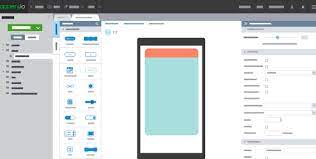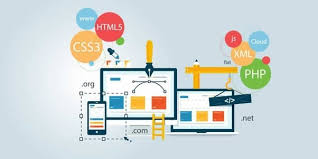Automotive software development is an exciting field that has seen tremendous growth in recent years. As cars become more advanced, they require increasingly sophisticated software to operate, and this has led to a surge in demand for automotive software developers.
One of the main challenges facing automotive software developers is the need to create software that can operate in a wide range of environments. Cars are exposed to a variety of conditions, including extreme temperatures, vibrations, humidity, and electromagnetic interference. This means that automotive software must be designed with robustness and reliability in mind.
Another key challenge is the need to ensure that automotive software is secure. With modern cars being connected to the internet and other devices, they are vulnerable to cyber-attacks. Automotive software developers must therefore take steps to ensure that their code is secure and cannot be easily hacked.
One of the most exciting areas of development in automotive software is autonomous driving. Self-driving cars have the potential to revolutionize transportation by reducing accidents and traffic congestion, as well as enabling new business models such as ride-sharing services. However, developing autonomous driving technology requires sophisticated algorithms and machine learning techniques that can analyze vast amounts of data from sensors and cameras.
In addition to autonomous driving, there are many other areas of development in automotive software. For example, infotainment systems are becoming increasingly sophisticated, with features such as voice recognition and touchscreens becoming standard on many new cars. There is also a growing demand for software that can monitor vehicle performance and provide real-time diagnostics.
Overall, automotive software development is a fascinating field that offers many opportunities for innovation and creativity. As cars become more advanced and connected, there will be an increasing demand for skilled developers who can create reliable, secure, and high-performance software that meets the needs of drivers around the world.
8 Essential Tips for Successful Automotive Software Development
- Have a clear understanding of the scope of the project before beginning development. This will help you to create an accurate timeline and budget for the project.
- Utilize automated testing tools to ensure that your software is functioning correctly and meets all requirements.
- Use version control systems like Git to keep track of changes made during development and make sure everyone has access to the same codebase.
- Take advantage of open source libraries when possible, as they can save time and money in development costs.
- Make sure your software is secure by implementing proper authentication, encryption, and authorization protocols where necessary.
- Adhere to industry standards when developing automotive software so that it is compatible with other existing systems in the market place..
- Implement scalability into your design so that your software can handle increasing demand as needed without compromising performance or security .
- Keep up with new developments in automotive technology so that you are aware of any potential changes or improvements needed for your software .
Have a clear understanding of the scope of the project before beginning development. This will help you to create an accurate timeline and budget for the project.
When it comes to automotive software development, having a clear understanding of the scope of the project before beginning development is crucial. This tip may seem obvious, but it is often overlooked, leading to delays and cost overruns.
Before starting any development work, it is important to define the project’s scope. This includes identifying the features and functionality that are required, as well as any constraints or limitations that need to be considered. It is also essential to understand the target audience for the software and their needs.
Once you have a clear understanding of the project’s scope, you can create an accurate timeline and budget for the project. This will help you to manage expectations and ensure that all stakeholders are aware of what can be achieved within the given timeframe and budget.
Having a clear understanding of the project’s scope also enables you to prioritize tasks effectively. By identifying which features are most important or critical, you can ensure that they are developed first. This helps to reduce risk and ensures that key functionality is delivered on time.
In summary, having a clear understanding of the scope of an automotive software development project before beginning development is essential. It enables you to create an accurate timeline and budget, prioritize tasks effectively, and manage expectations. By following this tip, you can increase your chances of delivering a successful project on time and within budget.
Utilize automated testing tools to ensure that your software is functioning correctly and meets all requirements.
In the world of automotive software development, ensuring that your code is functioning correctly and meets all requirements is essential. One effective way to achieve this is by utilizing automated testing tools.
Automated testing tools can help developers to identify bugs and errors in their code quickly, saving time and resources in the long run. These tools can also ensure that software meets all requirements, including performance, security, and reliability.
By using automated testing tools, developers can simulate a wide range of scenarios and test their software under various conditions. This helps to identify potential issues that may arise in real-world situations, such as extreme temperatures or electromagnetic interference.
Automated testing tools can also help developers to streamline their workflows by automating repetitive tasks such as regression testing. This frees up time for developers to focus on more important tasks such as feature development and optimization.
In conclusion, utilizing automated testing tools is an excellent tip for automotive software development. By doing so, developers can ensure that their code is functioning correctly and meets all requirements while saving time and resources in the process.
Use version control systems like Git to keep track of changes made during development and make sure everyone has access to the same codebase.
When it comes to automotive software development, using version control systems like Git is a crucial tip to keep in mind. These systems allow developers to keep track of changes made during development and ensure that everyone has access to the same codebase.
Version control systems like Git provide a centralized repository for all code changes, allowing developers to easily track and manage changes made by multiple team members. This ensures that everyone is working on the same codebase and eliminates the risk of conflicts arising from different versions of the code being used.
Another advantage of using version control systems is that they provide a history of all changes made to the code, including who made them and when. This makes it easy to identify what changes were made, why they were made, and when they were made. It also allows developers to roll back changes if necessary, which can be critical in ensuring the stability and reliability of automotive software.
In addition to these benefits, version control systems like Git also make it easy for developers to collaborate on projects remotely. With many teams working from different locations around the world, having a centralized repository for code changes can be essential in ensuring that everyone is on the same page.
Overall, using version control systems like Git is an essential tip for anyone involved in automotive software development. By keeping track of changes and providing a centralized repository for code, these systems ensure that everyone has access to the same codebase and can work together effectively towards creating high-quality software solutions.
Take advantage of open source libraries when possible, as they can save time and money in development costs.
Developing automotive software can be a complex and time-consuming process, which is why it’s important to take advantage of all the resources available. One such resource is open source libraries, which can save both time and money in development costs.
Open source libraries are pre-built software components that are freely available for use by anyone. They are typically created by a community of developers who collaborate on the code and share their work with others. By using open source libraries in automotive software development, developers can avoid having to reinvent the wheel and instead focus on building custom features that differentiate their product.
One of the key benefits of using open source libraries is that they have already been tested and optimized by other developers. This means that they are likely to be more reliable and efficient than code that has been developed from scratch. Additionally, because open source libraries are freely available, there is no need to pay licensing fees or royalties, which can significantly reduce development costs.
Of course, it’s important to choose open source libraries carefully and ensure that they meet the specific needs of your project. You should also be aware of any potential security issues associated with using third-party code.
In conclusion, taking advantage of open source libraries can be a smart strategy for automotive software development. By leveraging pre-built components, developers can save time and money while still delivering high-quality software that meets the needs of drivers around the world.
Make sure your software is secure by implementing proper authentication, encryption, and authorization protocols where necessary.
As automotive software becomes more advanced, it is critical to ensure that it is secure from cyber-attacks. One of the most important steps in achieving this goal is implementing proper authentication, encryption, and authorization protocols.
Authentication involves verifying the identity of users who access the software. This can be achieved through methods such as passwords, biometric identification, or smart cards. By ensuring that only authorized users can access the software, you can reduce the risk of unauthorized access and data breaches.
Encryption is another crucial security measure that involves encoding data so that it cannot be read by unauthorized parties. This can be achieved using techniques such as symmetric encryption or public-key encryption. By encrypting sensitive data such as user credentials or vehicle information, you can prevent hackers from accessing this information even if they manage to breach your defenses.
Authorization involves determining what actions users are allowed to perform within the software. This can be achieved through role-based access control or other similar methods. By limiting what users can do within the software, you can reduce the risk of malicious actors causing damage or stealing data.
Overall, implementing proper authentication, encryption, and authorization protocols is essential for ensuring that automotive software is secure from cyber-attacks. By taking these steps, you can protect sensitive data and prevent unauthorized access to your system.
Adhere to industry standards when developing automotive software so that it is compatible with other existing systems in the market place..
Adhering to industry standards is a crucial tip when developing automotive software. By following established guidelines and protocols, developers can ensure that their software is compatible with other existing systems in the marketplace. This is particularly important in the automotive industry, where cars are often composed of complex systems that need to work together seamlessly.
Following industry standards can also help ensure that automotive software is reliable and secure. Standards such as ISO 26262, which provides guidelines for functional safety in road vehicles, can help developers create software that meets high safety standards. Similarly, adherence to cybersecurity standards such as ISO/SAE 21434 can help protect vehicles from cyber-attacks.
By adhering to industry standards, automotive software developers can also benefit from the knowledge and experience of others in the industry. Many standards are developed through collaboration between experts in different fields, and they represent best practices that have been refined over time.
Finally, following industry standards can help make automotive software development more efficient and cost-effective. By using established protocols and guidelines, developers can avoid reinventing the wheel and focus on creating innovative solutions that meet the specific needs of their customers.
In conclusion, adhering to industry standards is an essential tip for anyone involved in automotive software development. By doing so, developers can create software that is compatible with existing systems, reliable and secure, benefits from the knowledge of others in the field, and ultimately delivers value to customers while reducing development costs.
Implement scalability into your design so that your software can handle increasing demand as needed without compromising performance or security .
When it comes to automotive software development, one of the most important tips to keep in mind is to implement scalability into your design. This means creating software that can handle increasing demand as needed without compromising performance or security.
Scalability is crucial in the automotive industry because cars are complex machines that require sophisticated software to operate. As more and more cars become connected to the internet and other devices, there will be an increasing demand for software that can handle large amounts of data and traffic.
By designing your software with scalability in mind, you can ensure that it will be able to handle this increased demand without slowing down or compromising security. This means creating a flexible architecture that can be easily expanded as needed, as well as using technologies such as cloud computing and distributed systems.
Implementing scalability into your design also has other benefits beyond just handling increased demand. It can also help improve reliability and reduce downtime by allowing you to quickly add or remove resources as needed. This means that you can ensure your software is always available when users need it.
In conclusion, implementing scalability into your automotive software development is essential if you want to create high-performance, secure, and reliable software that can handle increasing demand over time. By designing with scalability in mind, you can future-proof your software and ensure that it will continue to meet the needs of drivers around the world for years to come.
Keep up with new developments in automotive technology so that you are aware of any potential changes or improvements needed for your software .
As the automotive industry continues to evolve, it is essential for automotive software developers to keep up with new developments in technology. This includes advancements in areas such as sensors, artificial intelligence, and connectivity.
By staying up-to-date on new developments, developers can ensure that their software remains relevant and effective. They can also be aware of any potential changes or improvements needed for their software to keep pace with the latest trends.
For example, the rise of electric vehicles has led to a growing demand for software that can manage battery life and optimize energy consumption. Developers who stay informed about these trends can create software that meets these needs and helps electric vehicle owners get the most out of their vehicles.
In addition, keeping up with new developments in technology can also help developers identify potential security risks and take steps to mitigate them. As cars become more connected to the internet and other devices, they are increasingly vulnerable to cyber-attacks. By staying informed about the latest security threats and solutions, developers can create software that is secure and reliable.
In conclusion, keeping up with new developments in automotive technology is crucial for automotive software developers who want to remain competitive and provide high-quality solutions for their clients. By staying informed about emerging trends and technologies, developers can create software that meets the needs of drivers today and tomorrow.




